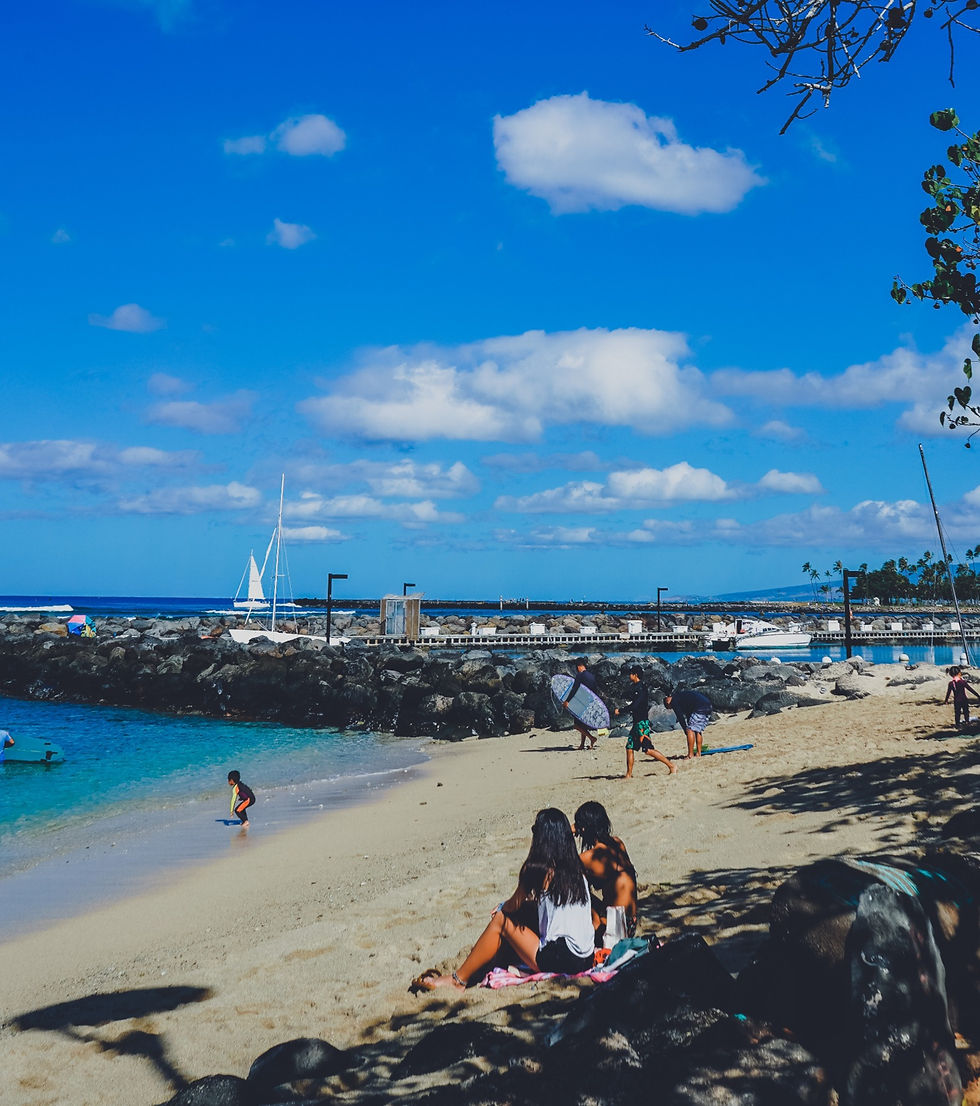Empty Waikiki Beach
- littlesurffam.hi

- Mar 30, 2020
- 2 min read

In every postcard and photo, Waikiki is packed with people; people who have become just as much a staple of the paradise as the palm trees swaying along the beach. But during a coronavirus shutdown, one of the busiest places in Hawaii went quiet.
The ghostly streets were just as much a sight to see as the empty stretches of sand and shoreline. The stay-at-home order prompted businesses to close temporarily. Some boarded up their storefronts, while others posted signs on locked doors for patrons to shop at their online store instead. Restaurants offered take-out as a desperate measure to stay afloat during uncertain economic times. Yet, only a handful of people left their homes, or hotel rooms, to wander the empty Waikiki avenues.

The beach didn't look much different from life on land, with the city ordering the closure of all parks. The usually crowded cove just inside of the breaker walls looked calmer than normal. The sand never looked so untouched and empty. Ocean activities, like swimming and surfing, were allowed; however, anyone lounging on the beach would get cited by police. Who knew the most popular beach in Hawaii would become so secluded? And in this way, too.
Then the 14-day travel quarantine for those arriving into the state happened. It essentially shut down Hawaii's tourism industry, with a drop in visitors–by the day. Instead, mostly locals took to the shores and surf of Waikiki; something that hasn't occurred in over a century. The growing number of tourists typically outnumbers locals on this part of Oahu's south side. It was history in the making but also an unexpected outcome of a global pandemic.
As days of quarantine and a stay-at-home order passed, Waikiki Beach continued to heal. It might not have been as apparent as the revived marine life in Venice's storied canals, but it was evident to those who grew up in this very neighborhood. The fresher air and quieter streets allowed Waikiki to thrive once again, as a welcomed ray of light much needed in these dark times.



Comments